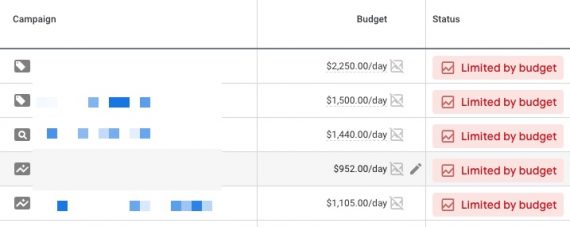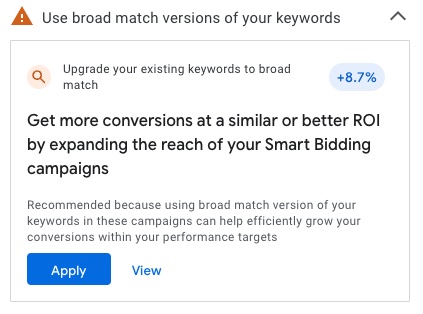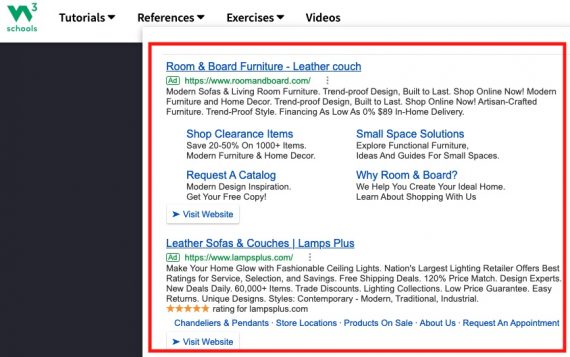[ad_1]
I receive many questions from advertisers on how to optimize Google Ads campaigns. Here are the most frequent, with my responses.
‘Should we increase our budget?’
Generally, consider increasing your spend for campaigns “Limited by budget” or for new initiatives to test.

Consider increasing your ad spend for campaigns “Limited by budget.” Click image to enlarge.
Determine whether each campaign is meeting its goal. Say the goal is a 300% return on investment, and three of five campaigns meet this threshold. Those three are candidates for increased budgets, perhaps from the two lower-performing campaigns.
To test new initiatives, set clear expectations. Performance Max campaigns are likely to yield a lower ROI, at least initially, while Dynamic Search Ads are typically the most efficient. For top-of-funnel tests, consider softer goals such as email sign-ups and form fills, which produce first-party data.
‘Should we bid on more keywords?’
First, determine the goals for the new keywords. Is the search intent top of funnel or bottom? For example, a search for “large leather couches” shows high purchase intent — bottom of funnel — whereas “living room furniture” is less targeted and thus top of funnel. Upper-funnel keywords generate more traffic but are less efficient.
Consider bidding on broad-match keywords, which are the least restrictive. A broad-match ad for the term “leather couches” may show for queries such as “leather furniture” and “luxury couches.” To begin, bid on lower funnel broad-match keywords. If the phrase match of “brown leather couches” shows a good ROI, test the broad-match version. As always, review the search query report frequently for potential negative keywords.
Google recommends using broad match for automated campaigns, claiming it reaches all relevant searches, especially for those with limited volumes.
Regardless, take the time to understand the implications of using broad match before implementing.

Google recommends using broad match for automated campaigns.
‘Should we opt out of the Search Network?’
By default, new search campaigns opt-in to the Search Network, which are third-party sites that show Google search and shopping ads through internal search results or directory listings. An example is W3Schools. It shows Google ads through its internal search engine.
Search partners allow advertisers to garner more exposure. In my experience, search partner traffic is lower than on Google directly and may account for just 10% of total clicks.
Moreover, traffic from the Search Network, while often helpful, can be unqualified and thus low-converting. Google doesn’t provide metrics for each partner site. Thus there’s no way to identify poor performers. And Google doesn’t allow excluding specific Search partners. Advertisers can opt-in to the entire network or not at all.
To view Search Network performance, click Segment > Network > Search partners.

W3Schools shows Google ads through its internal search engine. Click image to enlarge.
‘How can we remain efficient while growing?’
It’s crucial to set realistic expectations, understand the purpose of new initiatives, and know Google Ads’ parameters.
To begin, determine the overall account goal, such as, “A 400% ROI is needed at the account level to ensure a profitable program.” Then, review the ROI of each campaign. Some will be higher and others lower.
For campaigns that exceed the goal, look at the impression share — a high percentage means more impressions. Google has multiple impression share metrics. “Search impression share” is the most important. The impression percentage and campaign efficiency will inform whether to adjust bid strategy goals or budget. For example, consider lowering your return-on-ad-spend goal if the impression share is 60% and the campaign generates a 5 to 1 return.
For campaigns not meeting the ROAS goal, evaluate potential optimizations to improve performance, or lower the goal. An upper-funnel campaign likely won’t perform as well as one with high purchase intent keywords. Thus upper- and lower-funnel campaigns should have different ROAS goals.
[ad_2]
Source link








